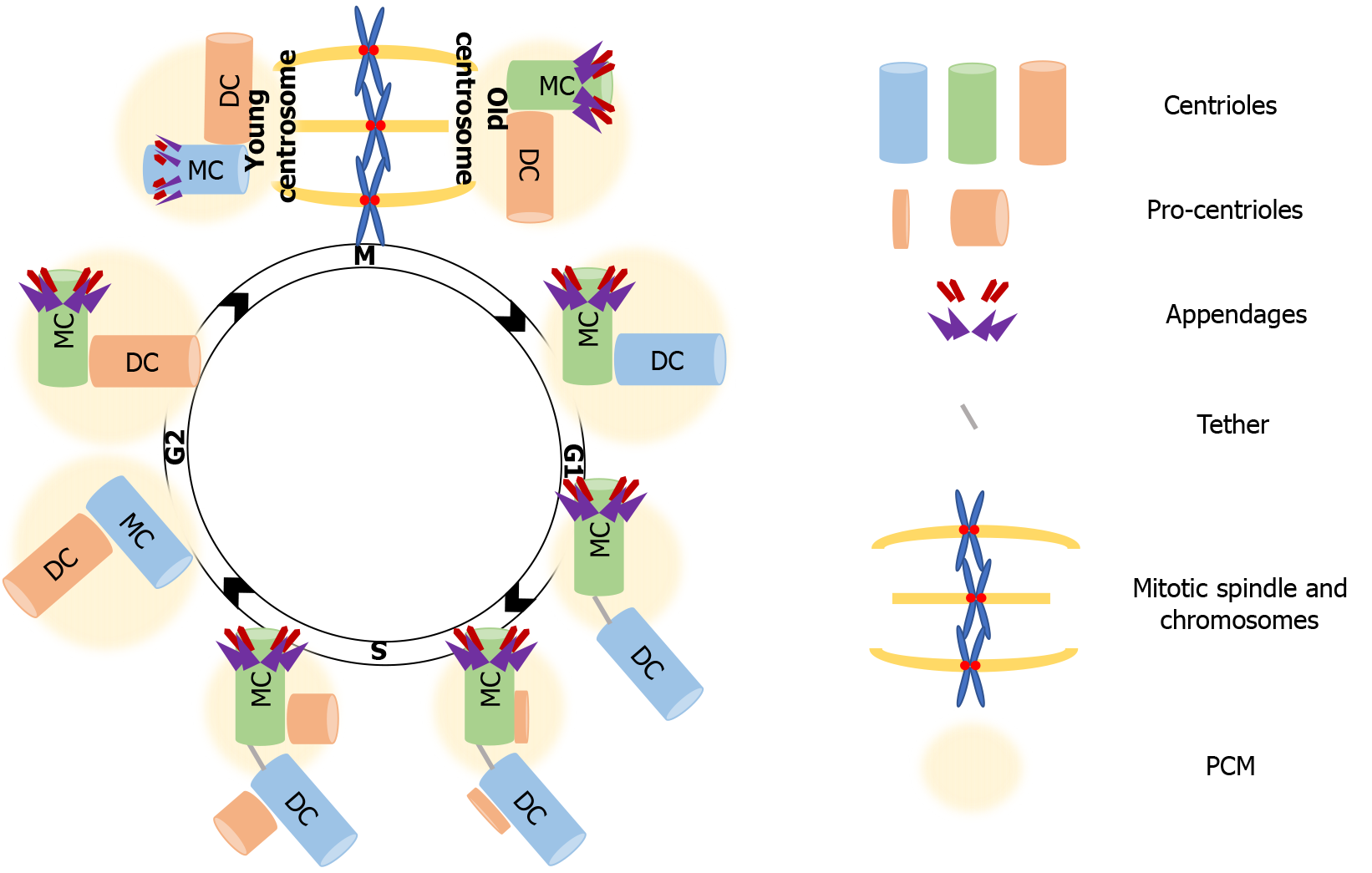Copyright
©The Author(s) 2021.
World J Stem Cells. Sep 26, 2021; 13(9): 1177-1196
Published online Sep 26, 2021. doi: 10.4252/wjsc.v13.i9.1177
Published online Sep 26, 2021. doi: 10.4252/wjsc.v13.i9.1177
Figure 1 The centrosome cycle.
Cycling cells tightly regulate the centrosome cycle, allowing only one duplication round per cell cycle. To ensure this, duplication and segregation of centrosomes is coregulated with the chromosome duplication-segregation cycle. In G1, the centrosome modifies its structure by disorientation or disengagement of the centrioles, with loss of their tight association while remaining connected by the fibrous linker or tether. Two sets of appendages mark the mother centriole. Afterwards, at the onset of S phase, the initiation of the duplication occurs with the formation of a new centriole (procentriole) at the proximal end of each of the already existing centrioles. The next step is the elongation of the procentriole, which starts during late S phase. Elongation is followed by maturation that continues until late G2, with the recruitment of additional pericentriolar matrix material, eventually leading to the formation of two centrosomes, old and young. The old centrosome contains the old mother centriole (green) and the young centrosome contains the new mother centriole (blue). The complete maturation of the new mother centriole (blue) extends over one and a half cell cycles by the acquisition and maturation of full length distal and subdistal appendages. At the end of G2, the tether between mother and daughter centrioles dissolves, freeing the two centrosomes to move to the opposite poles in order to properly orient the mitotic spindle. After mitosis, each daughter cell inherits a single centrosome, either the old or the new one. DC: Daughter centriole; MC: Mother centriole; PCM: Pericentriolar matrix.
- Citation: Goutas A, Trachana V. Stem cells' centrosomes: How can organelles identified 130 years ago contribute to the future of regenerative medicine? World J Stem Cells 2021; 13(9): 1177-1196
- URL: https://www.wjgnet.com/1948-0210/full/v13/i9/1177.htm
- DOI: https://dx.doi.org/10.4252/wjsc.v13.i9.1177









